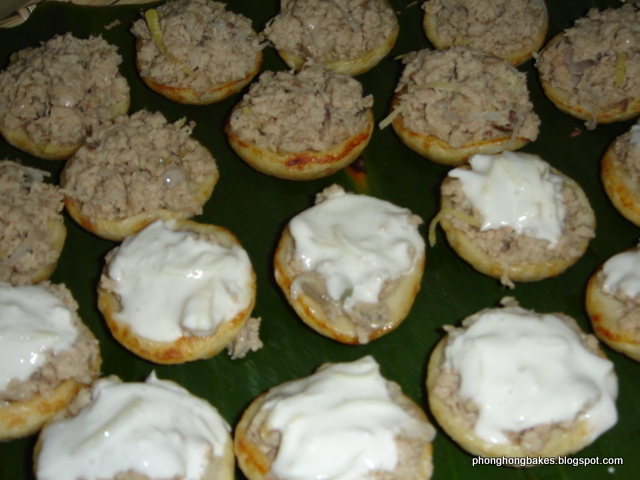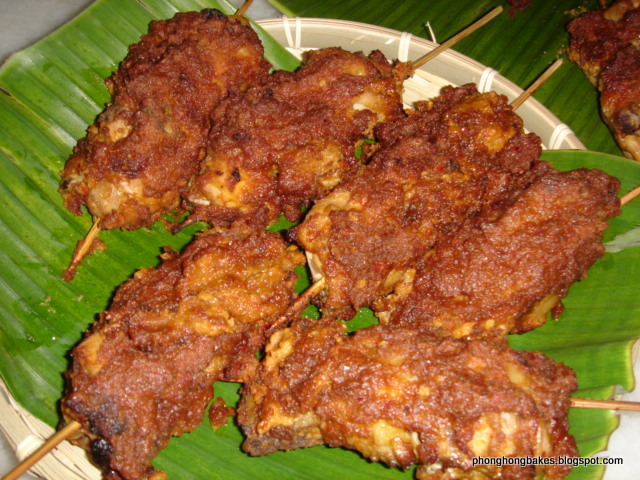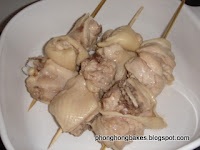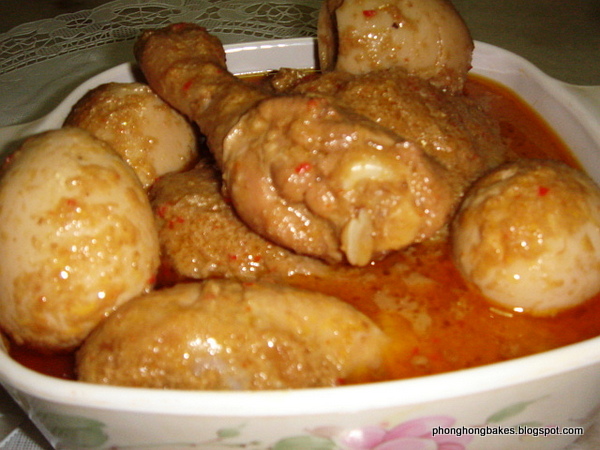Initially I did not have this dish in mind when participating in the Malaysian Food Fest Terengganu. It is a very simple dish but when I saw my cousin Hwee Lan's post on MFF Malaysia Facebook page, I thought it would be great to share my family's version of this dish. This dish is also known as Kay Char Eam and Hwee Lan's recipe is the traditional version.
What you need is chicken (and pork belly if you like), garlic, salt and cooking oil. The simple combination of garlic and salt does a wonderful job of making this dish so tasty.
Traditionally the chicken is boiled first, then the meat shredded before being fried with garlic and salt. I have not tasted that version and my grandma and mum cook it differently. The chicken is not boiled but marinated with the garlic and salt before cooking. And grandma insists that the addition of pork belly adds a bit more punch to this dish. I will have to agree :)
What you need is chicken (and pork belly if you like), garlic, salt and cooking oil. The simple combination of garlic and salt does a wonderful job of making this dish so tasty.
Traditionally the chicken is boiled first, then the meat shredded before being fried with garlic and salt. I have not tasted that version and my grandma and mum cook it differently. The chicken is not boiled but marinated with the garlic and salt before cooking. And grandma insists that the addition of pork belly adds a bit more punch to this dish. I will have to agree :)
The recipe below is my family recipe and I basically eye balled the measurement of the ingredients.
Kay Khong Eam (Chicken with Garlic and Salt)
Ingredients
- 2 chicken legs, cut into bite sized pieces
- 1 pork belly, cut into 1/2 inch strips
- 8 cloves of garlic
- salt to taste
- oil for frying
Method :
- Take 3 cloves of garlic and pound with 1/2 teaspoon salt.
- Use this garlic paste to marinate the chicken and pork belly. Set aside for 30 minutes.
- Crush and roughly chop 5 cloves of garlic.
- Heat oil in frying pan and fry garlic and 1/2 teaspoon salt, for about 1 minute.
- Add pork belly and fry until meat turns opaque. Add some water and let simmer for 20 minutes.
- Add chicken and fry until meat turns opaque. Add some water and simmer for 20 to 30 minutes until chicken is cooked.
- Taste and add more salt of necessary.
- At the final stage, keep frying until the dish is fairly dry and slightly browned.
Grandma's Chilli Sauce (Hancheo Cheow)
Ingredients
- 10 fresh chillies (deseed if you want less heat)
- 15 dried chillies, soaked to soften (deseed if you want less heat)
- 2 loves garlic
- 2 heaped tablespoons bean paste (taucheow)
- 2 tablespoons sugar
- 100g gula Melaka
- 400 ml vinegar
Method
- Blend chillies, garlic and beanpaste
- In a saucepan mix vinegar, bleanded ingredients, sugar and gula Melaka
- Boil the mixture until it slightly thick, about 15 to 20 minutes
- If you find it too thick/sour, you can add a bit of water.
- Adjust for taste, it should be sweet, sour and salty.
- store in a clean jar and keep in the fridge.
Note : This chilli sauce can be kept for up to 2 month is the fridge.
I am submitting this post to Malaysian Food Fest, Terengganu Month hosted by Lena of frozen wings.
















































